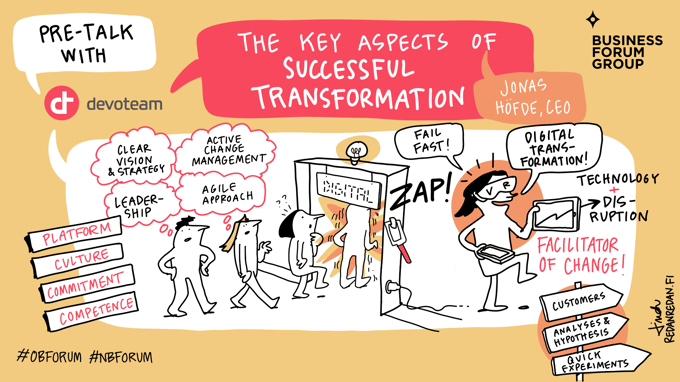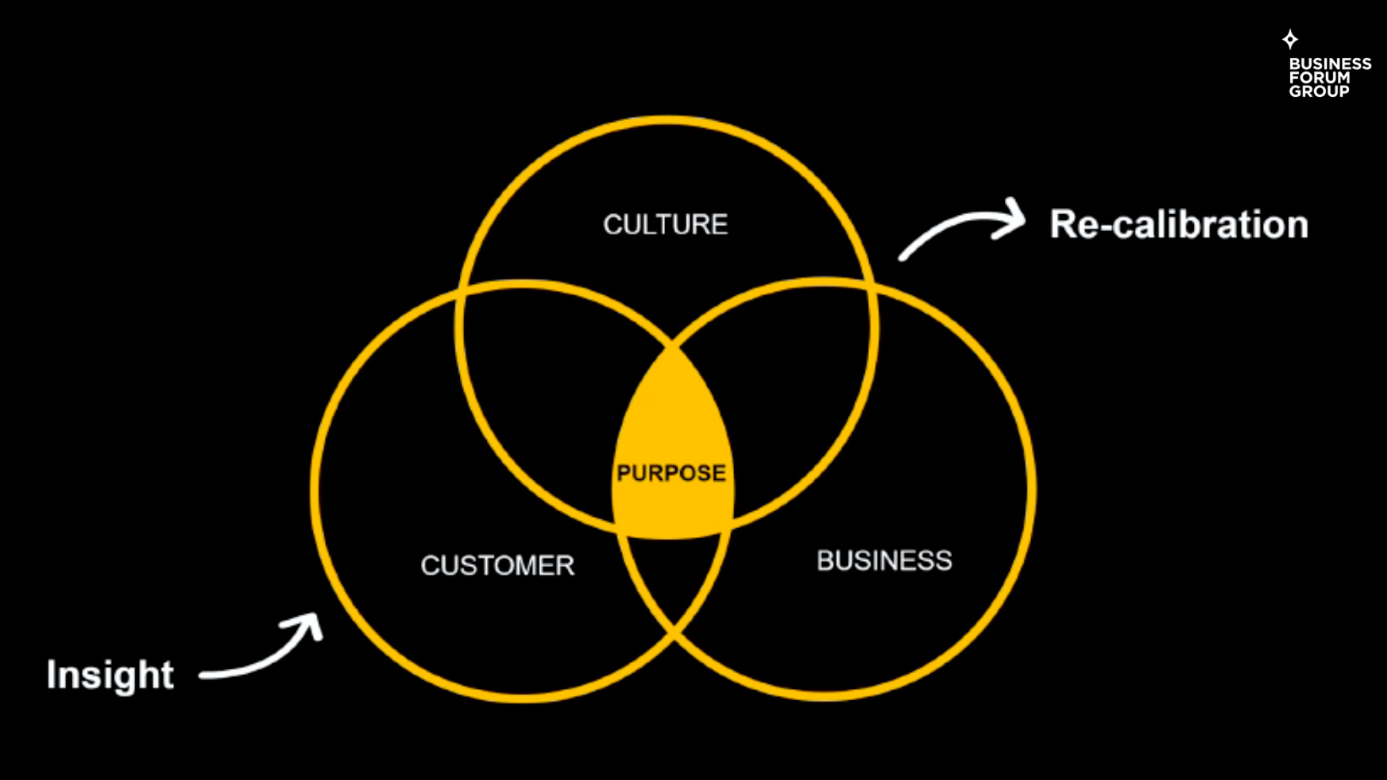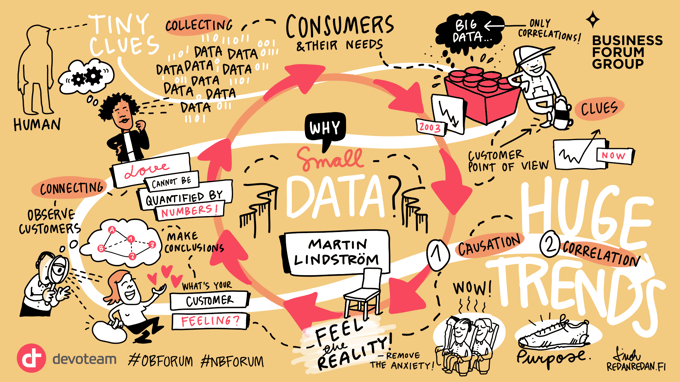On the 15th of February, we joined forces with Nordic Business Forum and Devoteam to find out. At our webinar, the renowned business thinker and author, Martin Lindstrom explained how Small Data has been instrumental in the turnaround success of numerous companies and further highlighted why leaders should start to embrace it.
Here we give you a written overview of Martin’s keynote, and you can also watch the recording of the entire webinar.
Why Small Data Matters?
Before we dive deeper, let’s lay out the definition of Small Data:
Small Data = Seemingly insignificant behavioral observations that point toward one or more unmet customer needs.
Now, let’s dive deeper: why is this so important?
Martin kicked things off by explaining a real-life example from 2004. Back then, the LEGO Company was near bankruptcy. The executives in the company had found through Big Data that due to the lengthy construction time, kids no longer had an interest in playing with LEGOs. The response from the company was to introduce larger modules to cut the building time in half. However, sales plummeted. So, they tried something different: Small Data.
By visiting the home of an 11-year-old German boy they found that kids are actually willing to spend a lot of time building new things. As a result, the LEGO company reintroduced small bricks, created a movie, and formed alliances with Star Wars, Harry Potter, and Batman. “LEGO also started to change their culture around one profound insight: to get closer to and closer with the consumer.”
Did it work? Yes. As the link between the consumer and the company was recovered, LEGO became the most admired brand in the world (according to Brand Finance 2019). And during the pandemic, the success story has just continued.
To highlight the importance of small data, Martin said: “if you want to study animals, don’t go to the zoo. Go to the Amazon.” Which in the world of business means that you need to get close to your customers—you can’t rely on sitting behind a screen and analyzing reports.
 Visual Summary by Linda Saukko-Rauta
Visual Summary by Linda Saukko-Rauta
2. From More to LessShould Big Data Be Forgotten?
Martin then told about his visit to the Spanish clothing conglomerate, Inditex. He explained how he was astonished by their sophisticated systems and obsession with Big Data. However, he also emphasized that what seemed to be the success factor, was the similar obsession with Small Data. “Our sales associates call the store managers every day to check in and hear what the customers are telling them. Our data is not enough—we need to feel the reality”, said Amancio Ortega, the Founder of Inditex.
So, according to Martin, Big Data can help, but it doesn’t tell the entire truth. Big Data might reveal the rational parts of your customers' needs, behaviors, and wants, but it entirely leaves out the irrational parts. And according to neuroscientists, only 15% of what we do is rational—which of course means that 85% of what you and your customers do daily is irrational.
“Big data is all about correlation, and small data is all about causation. We can create a lot of correlations but we need the foundation in order to create the real hypothesis. Data doesn’t create meaning - we do.”
Martin underlined that he doesn’t think it’s either-or; the magic lies in taking considering both. “I would claim that it takes two to tango. Big and Small data combined are doing the trick when we’re looking at all the research studies coming up right now.”
So, no, you should not forget about Big Data, but you should rather combine it with Small Data that you gather by actually spending time regularly with your customers.
How Can You Adopt a Small Data Strategy?
Martin continued proving his points through real-life examples by telling about his encounter with Ingmar Kamprad, the founder of IKEA. He found that Ingmar was regularly spending time in the cash registers of IKEA stores. Why? “Because then I can look at the customer in the eye and feel what they’re thinking and see what they’re feeling”, said Ingmar at the time.
According to Martin, it is exactly this mindset that you should embrace in your organization to succeed with Small Data. “You need to embed it in your culture.”
What Martin argued is that the key is actually purpose. “When your purpose is not embedded into the organization or especially when your purpose is non-existent, you lose your employees. And that disconnect happens when you’re not connected with the customers.” According to Martin, your purpose should actually be in the middle of your customer, business, and culture Venn diagram. (See the photo below by Martin.) Martin further instructed that the purpose of your organization should truly live the vision of your customers, realign your business, and rebuild your culture. “You want to make sure that your purpose and culture are defined by your customers.”

Finally, Martin gave us three practical tips on how to start embedding this customer-centric mindset and a small data approach in your organization:
- “When you onboard new employees, make sure that they actually live the mindset of your customers.” Make every new employee spend time with your customers, so that they understand them and empathize with them.
- “Don’t start a project by looking at a report. Get your hands dirty!” You need to send an entire cross-functional team out to your customers not to ask whether they like your product but to really observe and understand them.
- “Have a blank seat in your office where it says ‘customer’.” Include your customers in every decision you make. Especially when you’re in doubt, ask yourself: “What would the customer answer here?”
 Visual Summary by Linda Saukko-Rauta
Visual Summary by Linda Saukko-Rauta
Want to learn more from Martin Lindstrom? Join us in September to see him live at Oslo Business Forum 2022: Future-Focused Leadership. Sign up now to secure your spot!